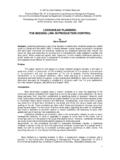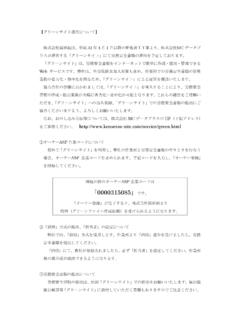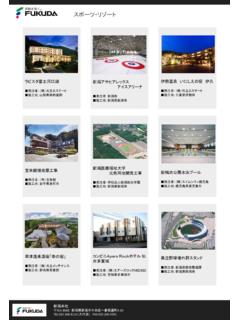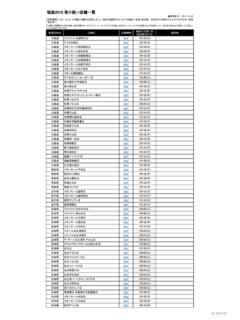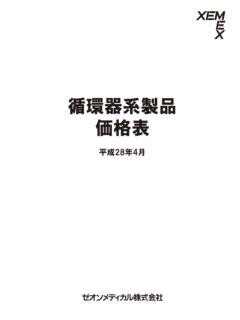Transcription of TOYOTA PRODUCTION SYSTEM ADOPTED BY …
1 TOYOTA PRODUCTION SYSTEM ADOPTED by building construction in Japan 817. TOYOTA PRODUCTION SYSTEM ADOPTED BY. building construction IN JAPAN. 1. Yoshitaka Nakagawa and Yoshitugu Shimizu2. ABSTRACT. This paper explains the lean construction SYSTEM that adopts TOYOTA PRODUCTION SYSTEM that is applied to building construction in Japan. The introduction of this SYSTEM to construction site is limited. Only a few contractors and house building companies are introducing this lean construction SYSTEM . First, the paper explains the reasons why only a limited number of companies are introducing the lean construction SYSTEM . The paper then describes the outline of this lean construction SYSTEM , the effects of this adoption, and compares the details of this lean construction SYSTEM , car PRODUCTION SYSTEM , and the conventional construction SYSTEM in Japan.
2 How to eliminate waste and implement the PDCA cycle in this SYSTEM are also shown. Finally, the paper explains the importance of education and incentive and motivation in order to obtain useful suggestions that will enhance lean construction . KEY WORDS. Lean construction . TOYOTA PRODUCTION SYSTEM . PDCA. JIT. Motivation. Incentive. Posting control board. Standard operating procedure documents 1. Dr. Professor, Department of Civil and Environmental Engineering , Engineering Division, Toyo University, Saitama Prefecture, Japan, 2. Managing director of Fukuda Corporation, Proceedings IGLC-12, August 2004, Denmark 818 Implementation 1. IS LEAN construction NECESSARY FOR construction PROJECT IN.
3 JAPAN? The national government's budget deficit and economic depression have decreased construction investments to 62% of those in peak periods in Japan over the last decade. Project owners are working on construction cost reductions to implement construction projects with efficiency within limited financial resources. With the size of projects and the unit prices of construction costs reduced, construction companies are in a dire financial condition. Reflecting this situation, about 6,000 companies a year have gone bankrupt from 2000 onward or about twice the figure during the 10-year period between 1990 and 1999. This figure is equivalent to about 1% of the total number of construction companies a year.
4 Under these circumstances, the construction companies are fighting for survival by making the construction work procedures more efficient and slimming down their organizations. The authors here introduce the building construction projects for which the TOYOTA PRODUCTION SYSTEM was ADOPTED for the first time in Japan to make the construction lean. 2. FUKUDA PRODUCTION SYSTEM (FPS). OUTLINE OF THE FPS. The construction companies that ADOPTED the TOYOTA PRODUCTION SYSTEM on a large scale in Japan are Fukuda Corporation in the field of building construction and a couple of companies in the field of housing construction . Fukuda Corp. is a Niigata-based construction company, having annual sales of $946 million (in 2003).
5 With the objective of making construction work more efficient and reducing construction costs, the company introduced the SYSTEM into construction work in 2002. In order to introduce the SYSTEM , the company received guidance from consultants (CULMAN ) who were former employees of TOYOTA Motor Corp. This building PRODUCTION SYSTEM is called the Fukuda PRODUCTION SYSTEM (FPS). The flow of the FPS is shown in Figure 1. Setting the goal (Subsection ). Establishment of indices to attain the goal (Subsection ). Establishment JIT ( ). Establishment of standard operating procedure documents (SOPD)for each work type (Subsection ). Setting of target figures for the indices (Subsection ). (Continuous revisions to the SOPD and target figures).
6 Implementation (Subsection ). Continuous improvements (Subsection ). Check and confirm that target figures have been attained (Subsection ). Figure 1: Flow of the FPS. Proceedings IGLC-12, August 2004, Denmark TOYOTA PRODUCTION SYSTEM ADOPTED by building construction in Japan 819. SETTING THE GOAL. The primary goal of the FPS is to achieve a high level of customer satisfaction. To attain the goal, the following four policies were established: (a) Individual perfection of quality assurance;. (b) Substantial cut in construction lead time (by 30%);. (c) Establishment of cost standards and then continuous cost targets reducing activities; and (d) Continuous improvement by the company and company staff.
7 ESTABLISHMENT OF INDICES TO ATTAIN THE GOAL. Conventional cost standards did not always need to make clear the details and duration of activities. So the cost standards are sometimes not very clear. To clarify them, the following three indices were introduced;. (a) Separation of material and labor costs: in the conventional cost standards for construction work, material and labor costs were in most cases combined. For this reason, there was not much need to make the details of activities clear. Consequently the cost structure was unclear and it was hard to find where waste was present (in material or labor costs). For this reason, the combined costs were separated into material and labor costs.
8 Particularly the costs of materials to be purchased were separated into net material cost, shop fabrication cost, transportation cost, overhead cost and profit to elucidate the presence of waste. (b) Review of standard units: conventionally, standard units, such as ton, m, , m3. and set, were used. Taking structural steel work as an example, ton was used as a standard unit for both large and small structural members. However, it was difficult to understand the work volume using this unit. To make the work volume clear, the unit ton is revised to the unit piece. In addition, the unit for interior boards is revised to the unit board for clarification. (c) Change of the measure of time for activities: conventionally, the measure of time for activities was working day.
9 However, it was difficult to find wasted time when working day is used for the measure of time. For this reason, the measure of time is changed to working time (by the hour, minute, and second). IMPLEMENTATION TO ATTAIN THE GOAL. The waste during construction work is classified into nine types and the policies for continuous reduction of waste are determined, as shown in Section This SYSTEM models after the TOYOTA PRODUCTION SYSTEM . Checks and confirmation are necessary to see whether the goal is attained. If the goal is not attained, the cause is examined. If the goal is attained, the procedural steps are standardized. In order to set the target figures to a higher level, a factor analysis is also carried out.
10 Major check and confirmation items are as follows: Proceedings IGLC-12, August 2004, Denmark 820 Implementation (a) Improvement of construction procedure and construction flow (b) Man-hour analysis: standardization of procedural steps (c) Establishment of individual perfection of quality assurance (d) Inspection of reduction of generated volume of construction rubbish 3. BASICS TO ATTAIN THE GOAL. Basically, construction work consists mainly of the physical movement of materials from the origin to design coordinates. Taking concrete work that forms a large proportion of construction work as an example, only the hydration step is a chemical reaction and other steps are nothing but physical movements.
